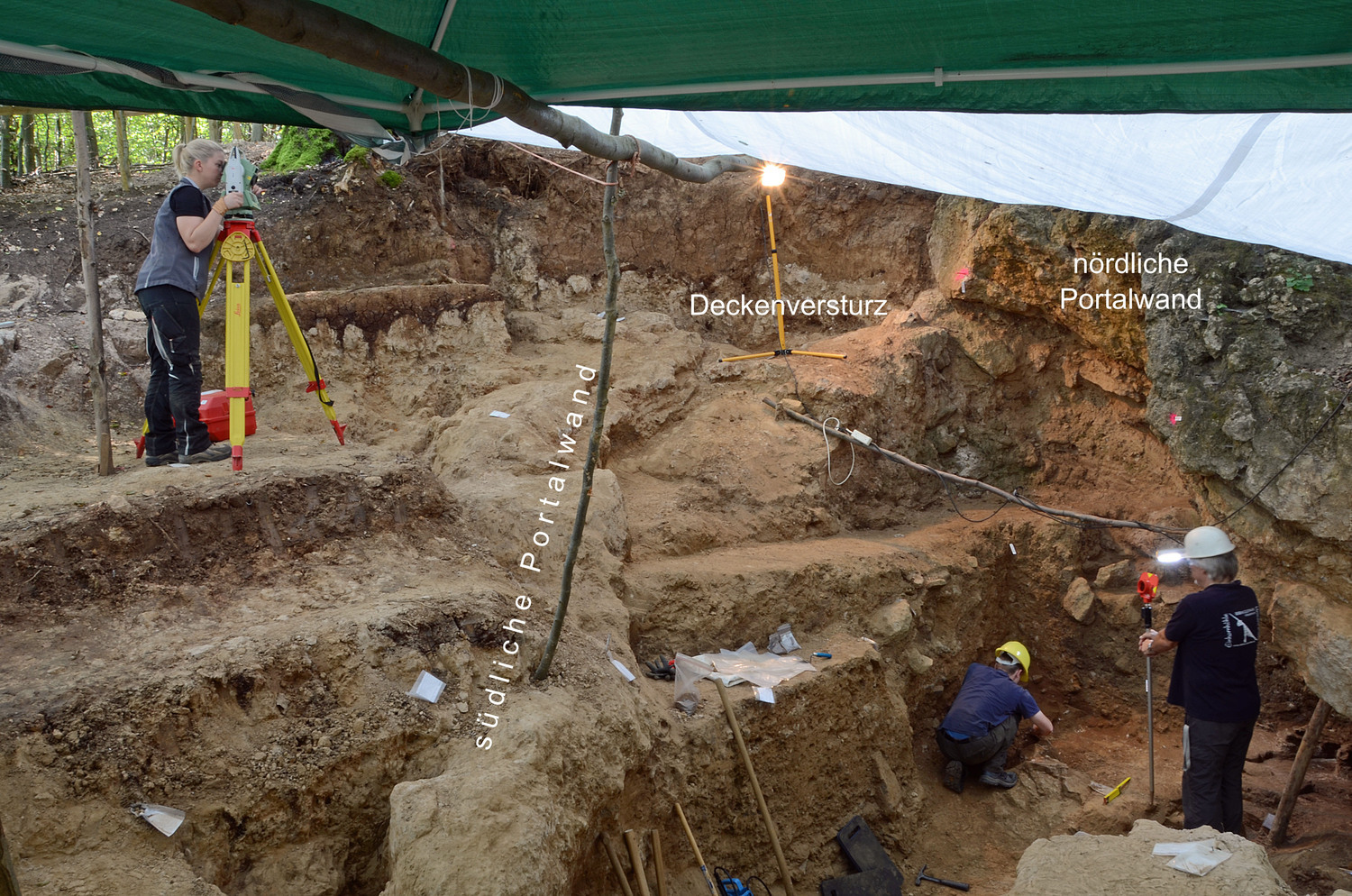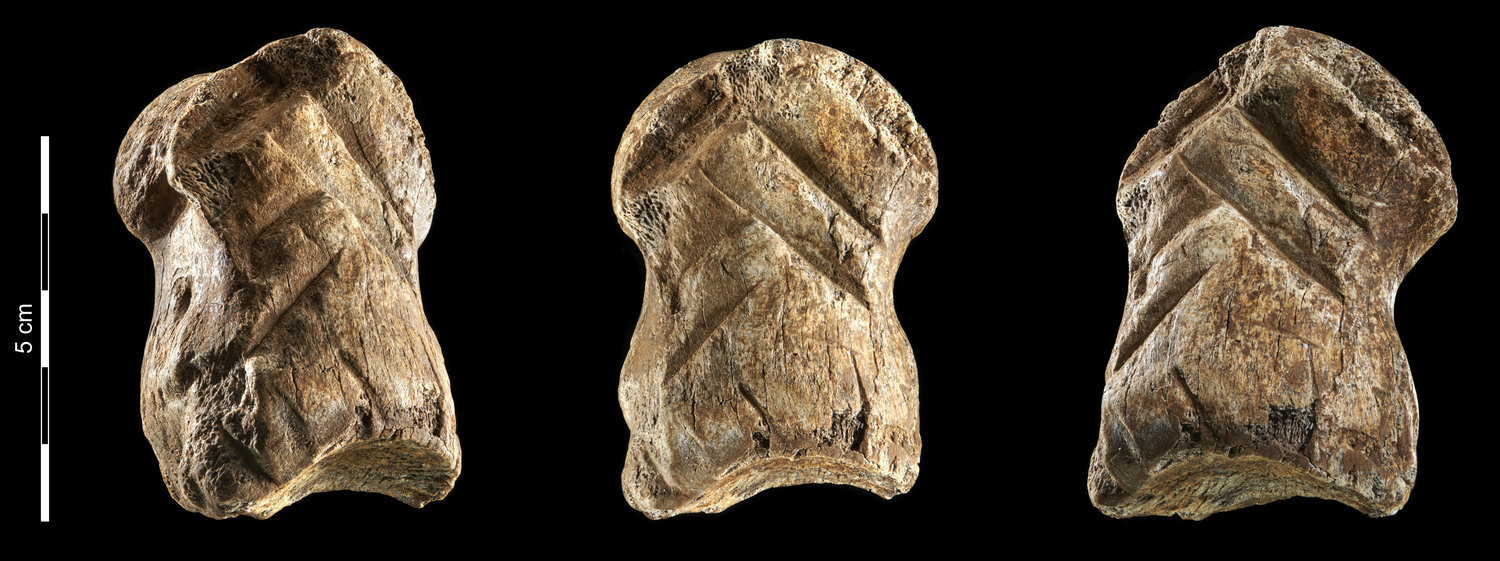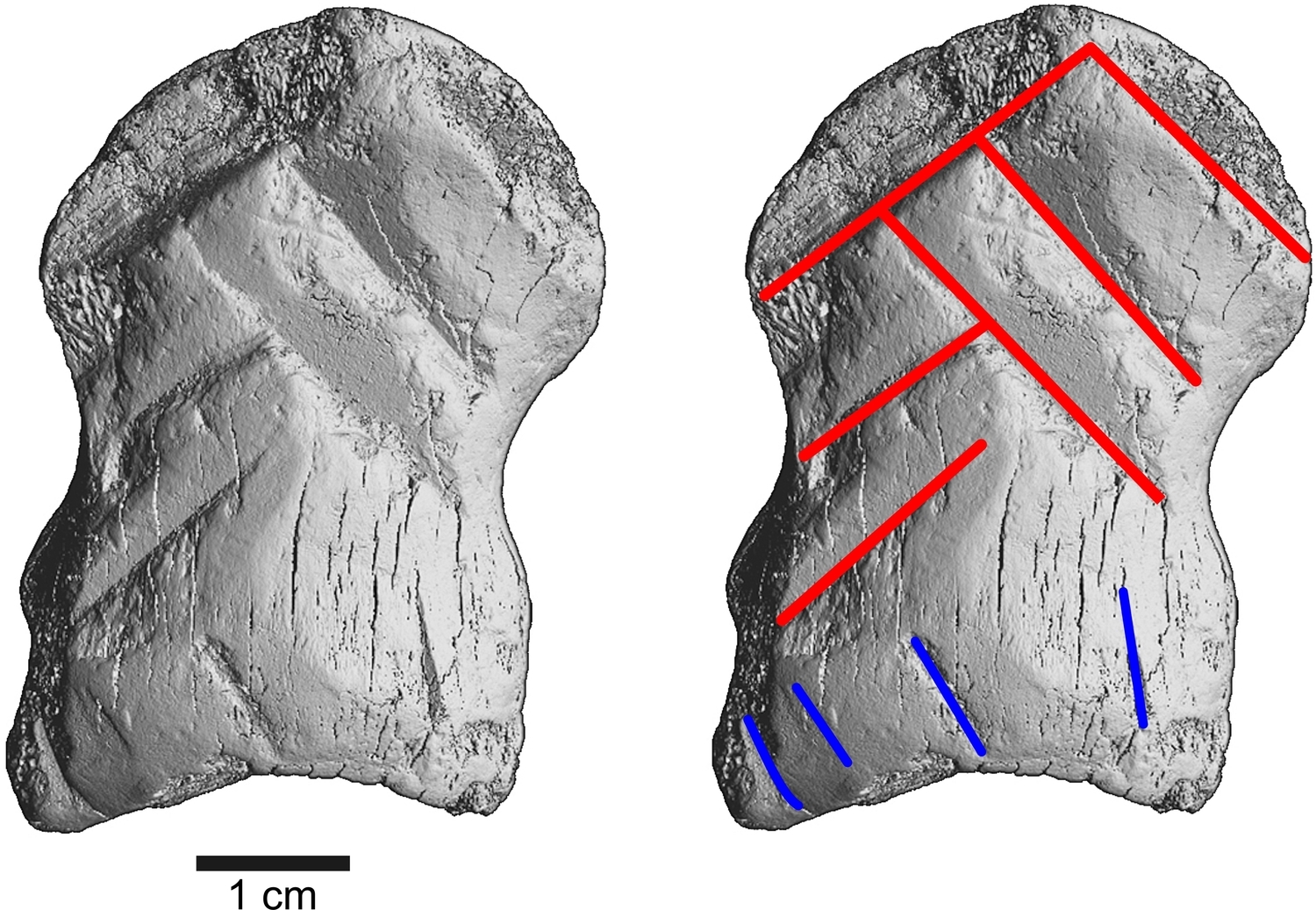If you’re anything like me, you’re fascinated by Neanderthals, that species or subspecies of ancient humans that went extinct, likely due to a combination of factors: climactic shifts, disease, and assimilation into the modern human genome. While their exact behavior of this group remains controversial, but we do know that they were capable of toolmaking. In fact, Neanderthals even created art, ranging from body paint and necklaces to cave scratches and music.
Now, modern humans can own a piece of art crafted by their ancient cousins. Archeologists Dirk Leder, Thomas Terberger and others from the University of Gottingen and the Lower Saxony State Office for Heritage have 3D scanned a unique artifact from a dig in Germany’s Harz Mountains and made it available for download in STL format.

The excavations in the fallen entrance area of the cave in 2019. The partially eroded south wall (marked “südliche Portalwand” on the image), and the well-preserved north wall (“nördliche Portalwand”) are clearly visible, while the cave roof has fallen. The decorated bone was found in layers of earth under the north wall. Photo: J. Lehmann, © NLD
Made up of bone taken from a giant deer (Megaloceros giganteus), the piece was found during an excavation of the entrance at Unicorn Cave, determined to be from the Neanderthal period. The researchers noted six notches on the foot bone, which they believe “demonstrates that conceptual imagination, as a prerequisite to compose individual lines into a coherent design, was present in Neanderthals.”
“We quickly realised that these were not marks made from butchering the animal but were clearly decorative,” said excavation leader Dr. Dirk Leder, of the Lower Saxony State Office for Heritage.

The carved bone – a foot bone from a giant deer (Megaloceros giganteus) – found in the Unicorn Cave (inventory no. 46999448-423). Photo: V. Minkus, © NLD
Not only were the carvings intentional, but the team believes that the artist behind it knew that the bone had to be boiled first in order to adequately soften its surface before spending about 1.5 hours making the pattern. Radiocarbon dating performed by Leibniz laboratory at Kiel University indicated that the piece was roughly 51,000 years old.
“It is probably no coincidence that the Neanderthal chose the bone of an impressive animal with huge antlers for his or her carving,” says Professor Antje Schwalb from the Technical University of Braunschweig.
While some ornamental objects from Neanderthals in current-day France have been discovered, they have been thought to be copies of pendants made by their human relatives who had already ventured to Europe by that time. Additionally, these items were thought to be only 40,000 years old, making the deer bone not just an original piece of Neanderthal art, but the oldest.

microCT scan with marking of the notches. Marked in red are the six notches that create the angular pattern, marked in blue are accompanying notches. Photo: A. Tröller-Reimer/D. Leder, © NLD
“The fact that the new find from the Unicorn Cave dates from so long ago shows that Neanderthals were already able to independently produce patterns on bones and probably also communicate using symbols thousands of years before the arrival of modern humans in Europe,” explained project leader Thomas Terberger, of Göttingen University’s Department for Prehistory and Early History, and the Lower Saxony State Office for Heritage. “This means that the creative talents of the Neanderthals must have developed independently. The bone from the Unicorn Cave thus represents the oldest decorated object in Lower Saxony and one of the most important finds from the Neanderthal period in Central Europe.”
The results of the research are published in Nature Ecology & Evolution, where you can also find an STL for the piece. Here is a direct download link to the artifact, as well.
Subscribe to Our Email Newsletter
Stay up-to-date on all the latest news from the 3D printing industry and receive information and offers from third party vendors.
You May Also Like
3D Printed Heat Spreader Could Improve Efficiency of Electronics
The low-hanging fruit for decarbonization has long been improving the efficiency of existing systems, hence the justification for LED lights and ENERGY STAR certified appliances. While such minor moves are...
3D Printing News Unpeeled: Marine Gearboxes, 3D Printed Motors and $1.7 Million in Seed Funding
UK based Equipmake just released their Ampere-220 e-axle system. The system, which is meant for high performance electric cars, was similar to one released on the Ariel HIPERCAR. It has...
CEAD Unveils 36-Meter-Long 3D Printer for Abu Dhabi’s Al Seer Marine
CEAD, a Dutch original equipment manufacturer dedicated to large-format 3D printers, has unveiled what it claims to be the world’s largest robotic arm-based 3D printer. At 36 meters long and...
3D Printed Biocomposites Could Help Reduce Marine Plastic Pollution
Concerns about the impact of plastic litter and microplastics in the oceans are at the forefront of environmental study. For decades, the marine environment has suffered from the degradation of...




































